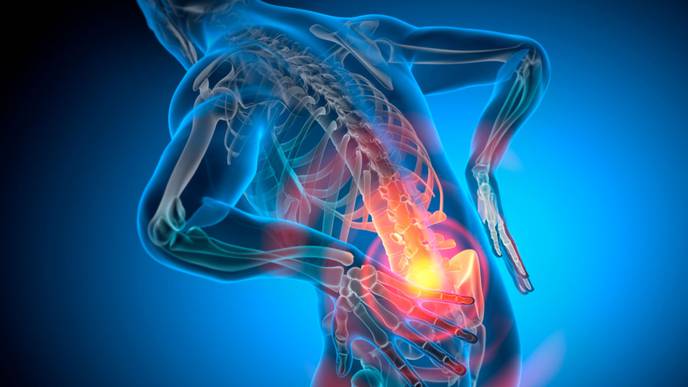ReachMD
Be part of the knowledge.™New 'Patch' Uses Natural Body Motion to Fix Disk Herniation

New 'patch' uses natural body motion to fix disk herniation
Researchers have developed a groundbreaking new 'patch' that utilizes natural body motion to effectively treat disk herniation. This innovative approach could revolutionize the way we treat this common spinal condition.
Understanding Disk Herniation
Disk herniation, also known as a slipped or ruptured disk, occurs when the soft cushion-like discs between the vertebrae in the spine bulge or rupture. This can cause severe pain, numbness, and weakness in the affected area, often requiring surgical intervention.
The Traditional Approach
Currently, the most common treatment for disk herniation is surgery, which involves removing the damaged portion of the disk and sometimes fusing the adjacent vertebrae together. While surgery can provide relief, it is an invasive procedure with potential risks and a lengthy recovery period.
The New 'Patch' Solution
The new 'patch' developed by researchers offers a non-invasive alternative to surgery. It works by utilizing the body's natural motion to gradually heal the herniated disk over time.
The patch is made of a biocompatible material that mimics the properties of the natural disk. It is placed over the affected area and secured in place. As the patient moves and performs regular activities, the patch moves with the body, applying gentle pressure and promoting healing.
How It Works
The patch stimulates the body's natural healing processes by providing support and stability to the damaged disk. It helps to distribute the load evenly across the spine, reducing pressure on the affected area and allowing the disk to heal.
Over time, the patch encourages the growth of new tissue, which gradually replaces the damaged portion of the disk. This process restores the disk's normal function and alleviates the associated symptoms.
Potential Benefits
The use of this new 'patch' offers several potential benefits:
- Non-invasive treatment option
- Reduced risk compared to surgery
- Shorter recovery period
- Preservation of natural spinal mobility
- Cost-effective alternative
Conclusion
The development of this new 'patch' brings hope to individuals suffering from disk herniation. By harnessing the body's natural motion, it offers a non-invasive and effective treatment option that could potentially replace the need for surgery in many cases. Further research and clinical trials are needed to validate its efficacy, but the initial results are promising. If successful, this innovation could significantly improve the quality of life for countless individuals dealing with disk herniation.
© Article Copyright 1999-2023
Life Technology™.
If you would like to republish the content of this or any other article from www.lifetechnology.com for commercial purposes visit
Life Technology™ News Content Syndication Licence. If you would like to republish the content of this or any other article from www.lifetechnology.com for non commercial purposes visit
Copyright And Royalty Free RSS Feeds For Commercial And Non Commercial Use.
If you would like for us to publish your article at www.lifetechnology.com visit
Publish Your Article At Life Technology™. If you would like to advertise here and on all 100,000+ pages of www.lifetechnology.com visit
Advertise At Life Technology™. For corporate sponsorship of www.lifetechnology.com visit
Corporate Sponsorship.
Since 1999 Life Technology™ has published medical science and technology news content totally free of charge. Because we do not charge a subscription fee we would kindly request that you
Make A Donation To Life Technology™and please, do share this article with your coworkers, friends, family and favorite social media platform.
Life Technology™ Medical NewsFeedburnerGoogleRSSLife Technology™ Science NewsFeedburnerGoogleRSSLife Technology™ Technology NewsFeedburnerGoogleRSS
Facebook Comments